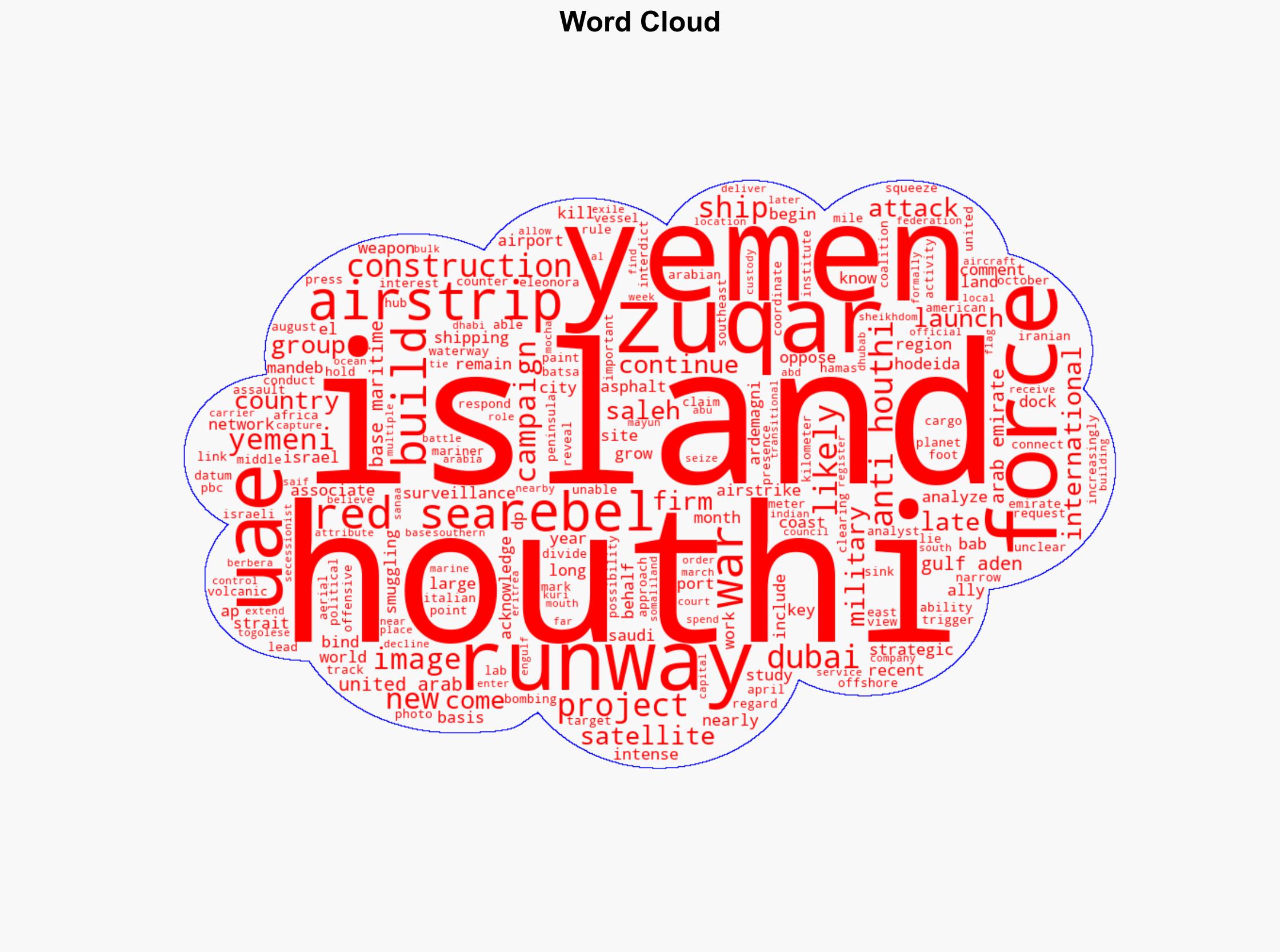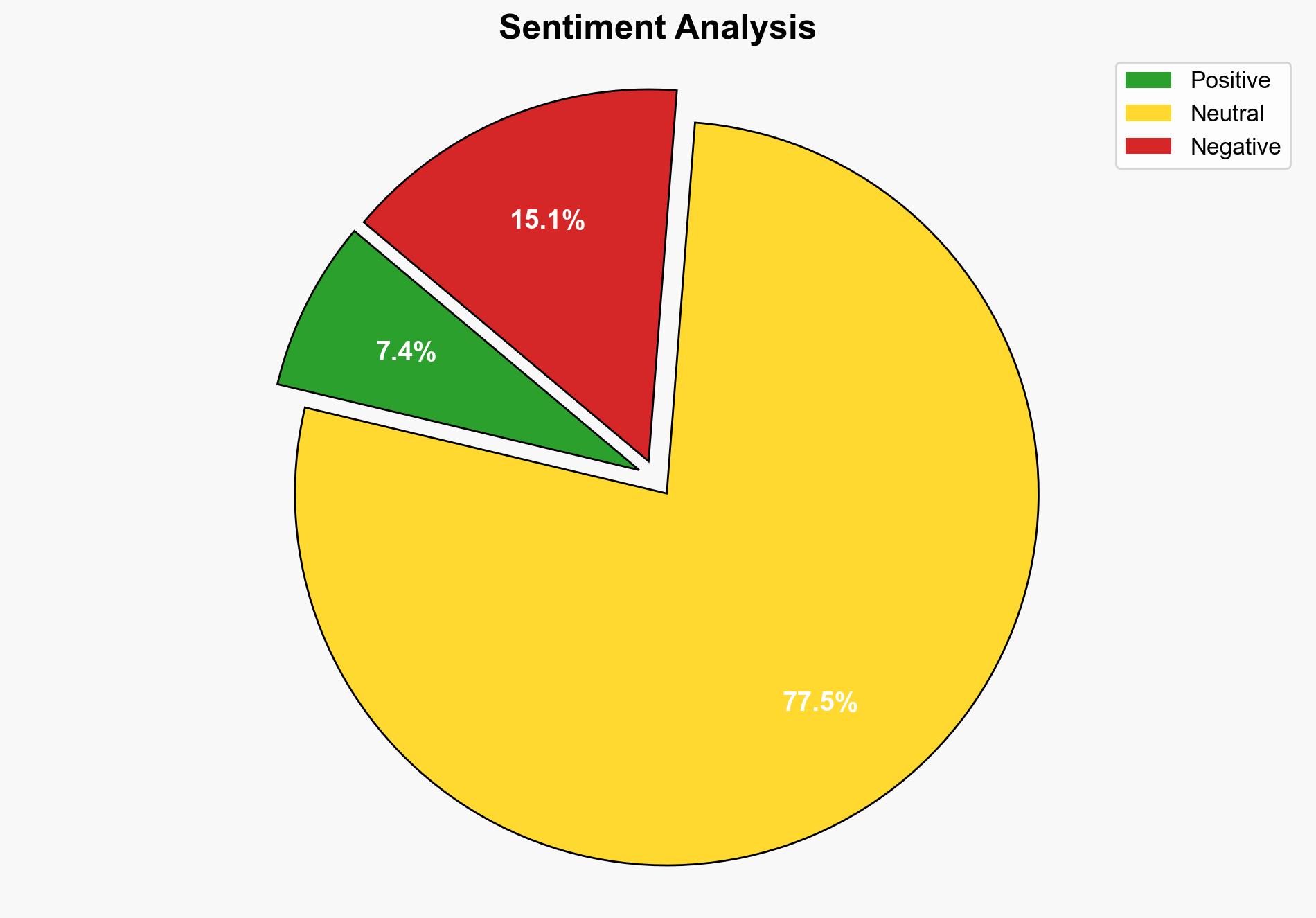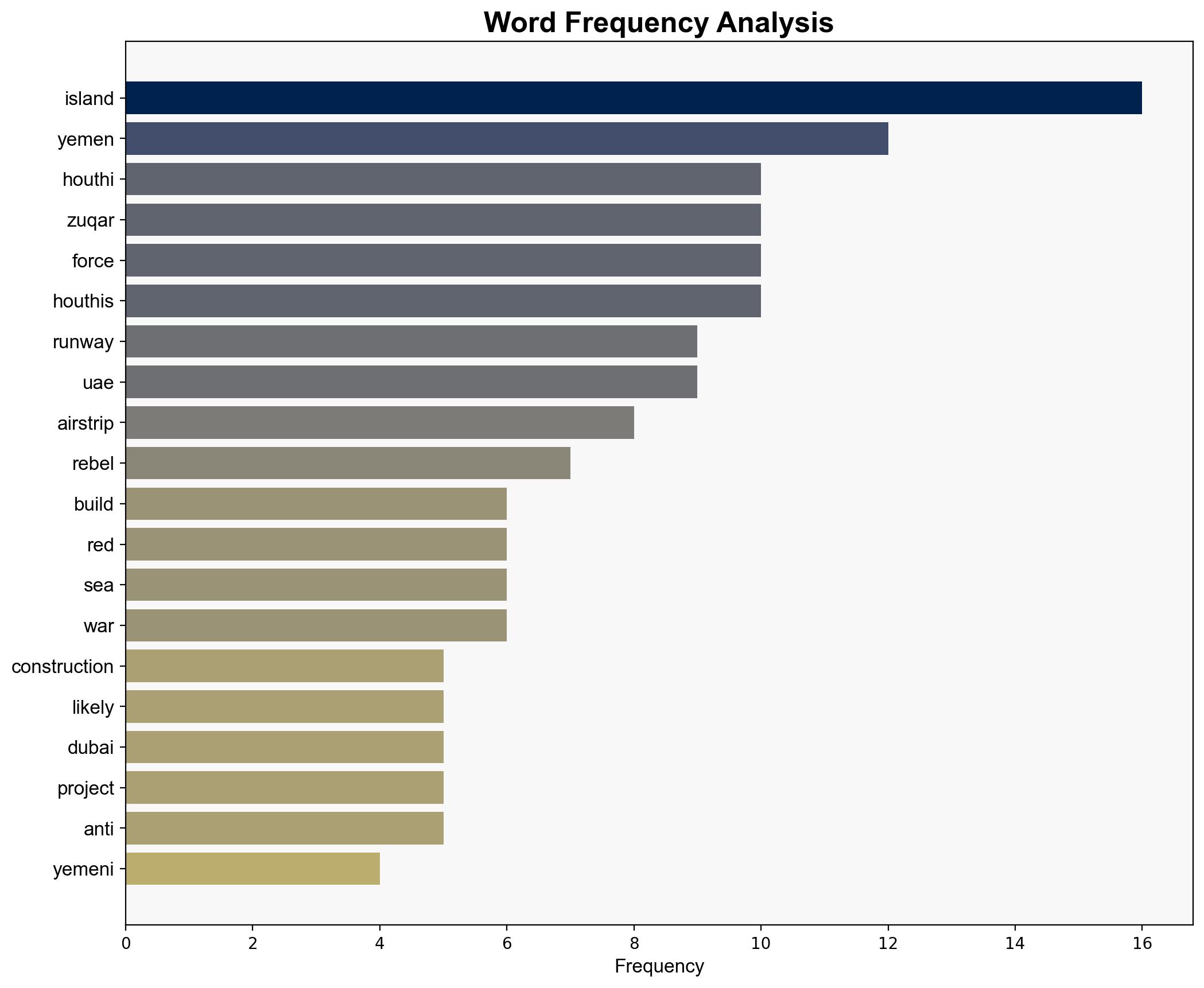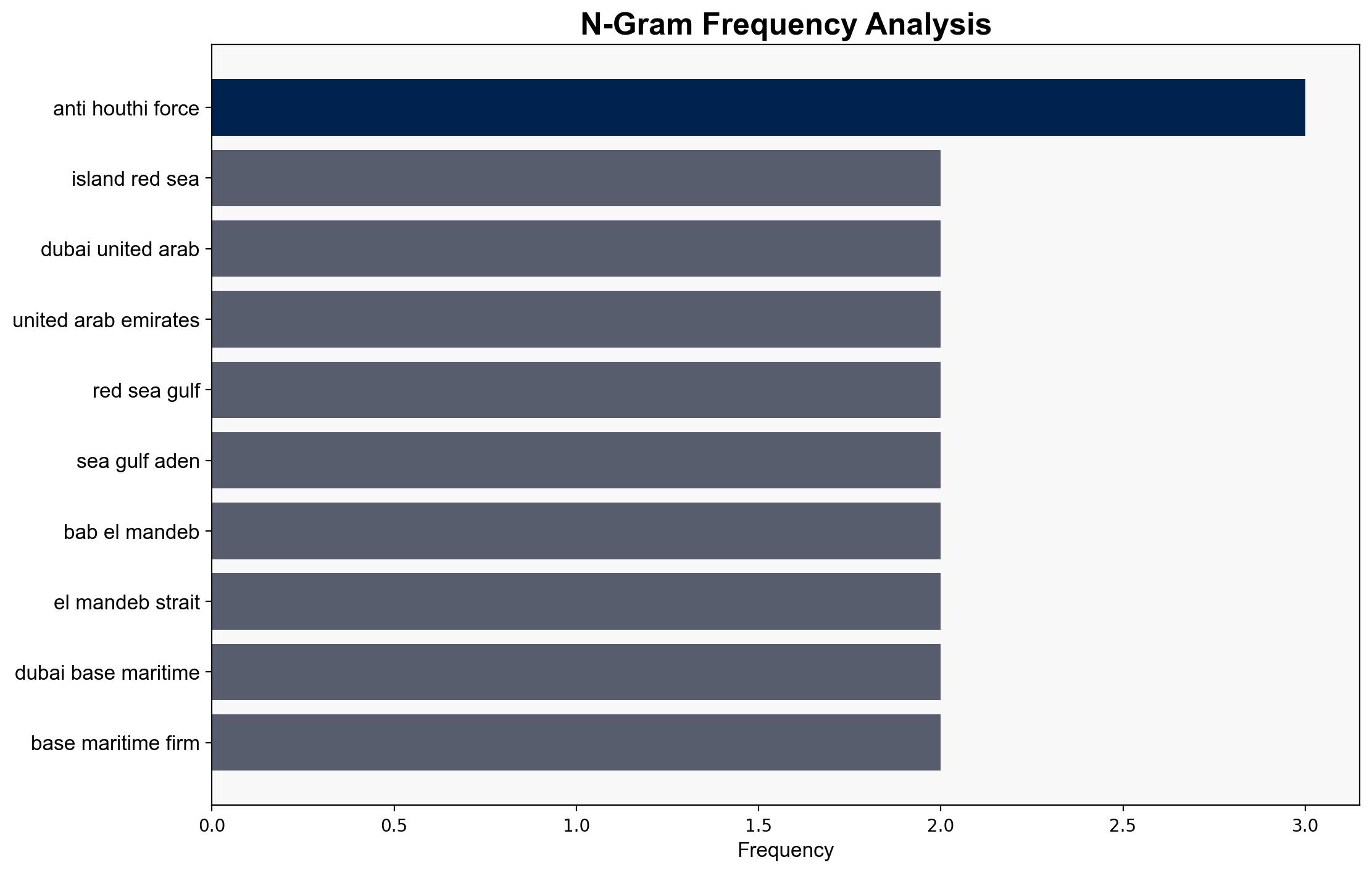Airstrip built on Yemeni island comes as Houthi rebels increasingly squeezed – ABC News
Published on: 2025-10-20
Intelligence Report: Airstrip built on Yemeni island comes as Houthi rebels increasingly squeezed – ABC News
1. BLUF (Bottom Line Up Front)
The construction of an airstrip on Yemen’s Zuqar Island likely represents a strategic move by forces opposed to the Iranian-backed Houthi rebels. The most supported hypothesis is that the airstrip is intended to enhance surveillance and control over key maritime routes in the Red Sea, potentially disrupting Houthi smuggling operations. Confidence in this assessment is moderate due to limited direct evidence of operational intentions. Recommended action includes increased monitoring of the airstrip’s usage and further diplomatic engagement with regional stakeholders to clarify intentions and mitigate escalation risks.
2. Competing Hypotheses
1. **Hypothesis A**: The airstrip is constructed to enhance military surveillance and control over the Red Sea and the Bab el-Mandeb Strait, aiming to curb Houthi smuggling and maritime threats.
2. **Hypothesis B**: The airstrip serves as a logistical hub for a broader regional strategy by the UAE and its allies, potentially supporting future military operations or economic initiatives in the region.
Using the Analysis of Competing Hypotheses (ACH) 2.0, Hypothesis A is better supported due to the strategic location of Zuqar Island and the ongoing conflict dynamics. The presence of UAE-linked entities and the strategic significance of the Red Sea bolster this hypothesis.
3. Key Assumptions and Red Flags
– **Assumptions**: It is assumed that the UAE and its allies have the capability and intent to use the airstrip for military purposes. It is also assumed that the Houthi rebels pose a significant maritime threat that justifies such infrastructure.
– **Red Flags**: The lack of official statements from the UAE or Yemeni authorities about the airstrip’s purpose raises questions. Additionally, the possibility of misinterpreting commercial or logistical intentions as purely military is a concern.
4. Implications and Strategic Risks
The airstrip could alter the balance of power in the region, potentially escalating tensions between the UAE-backed forces and the Houthis. It may also provoke a response from Iran, given its support for the Houthis. Economically, control over the Bab el-Mandeb Strait could impact global shipping routes, affecting international trade.
5. Recommendations and Outlook
- Enhance satellite and intelligence monitoring of the airstrip to determine its operational use.
- Engage in diplomatic discussions with UAE and Yemeni authorities to clarify intentions and prevent miscalculations.
- Scenario Projections:
- Best Case: The airstrip is used for non-military purposes, enhancing regional trade and stability.
- Worst Case: The airstrip becomes a launch point for military operations, escalating regional conflict.
- Most Likely: The airstrip is used for mixed purposes, with periodic military and logistical applications.
6. Key Individuals and Entities
– Eleonora Ardemagni (Analyst, Italian Institute for International Political Studies)
– DP World (Dubai-based maritime company)
– Saif Ship Marine Service (Dubai-based maritime firm)
7. Thematic Tags
national security threats, regional focus, maritime security, geopolitical strategy




